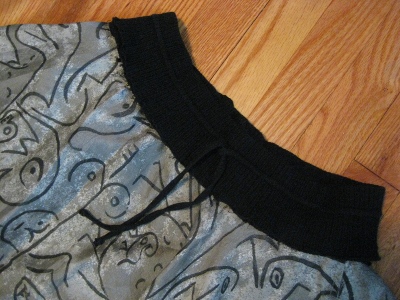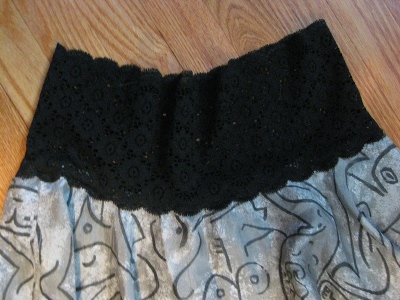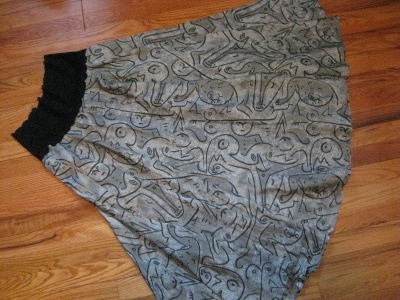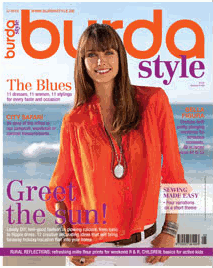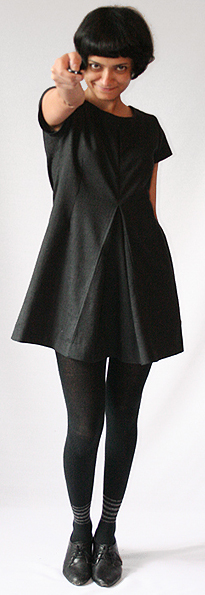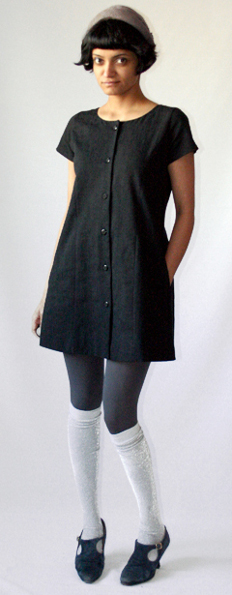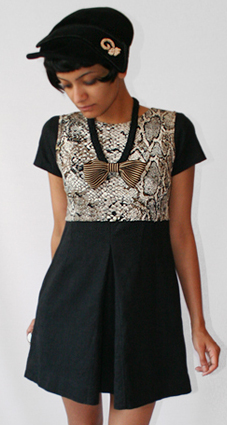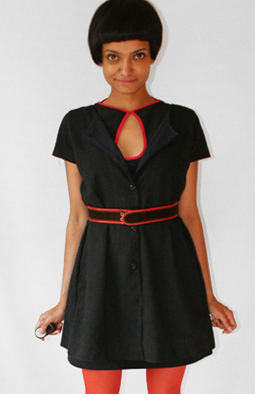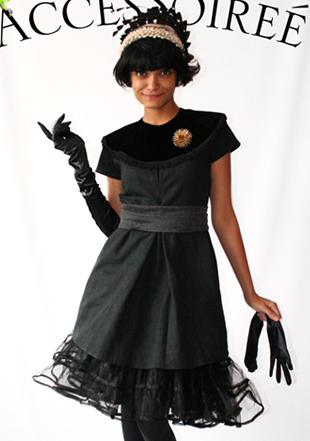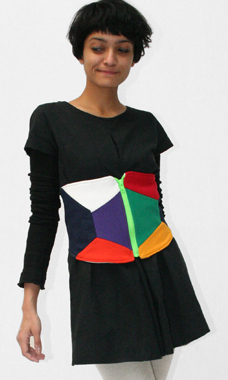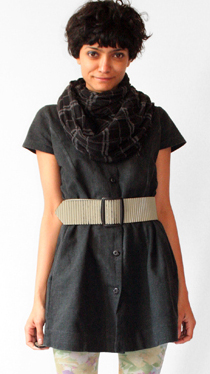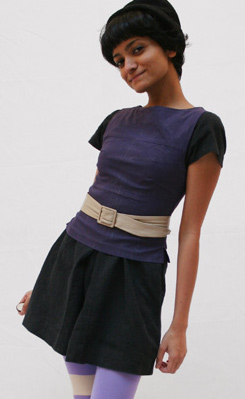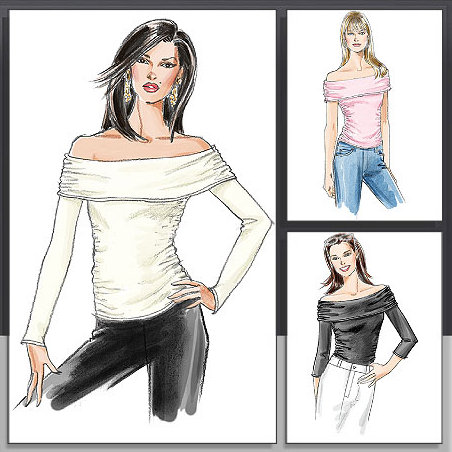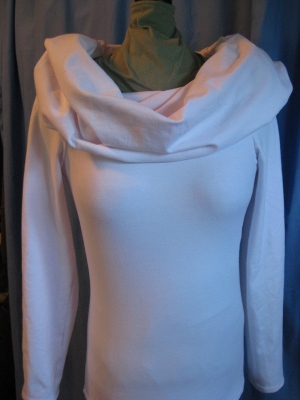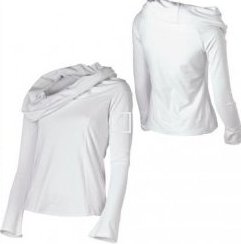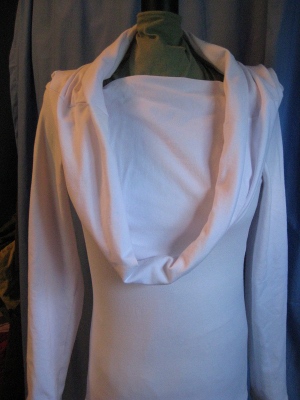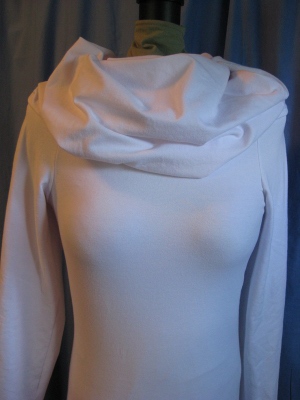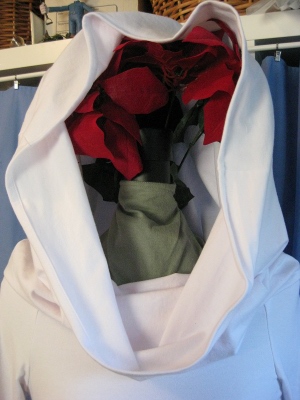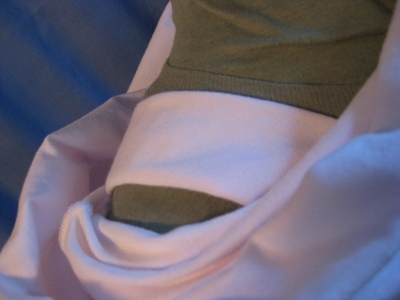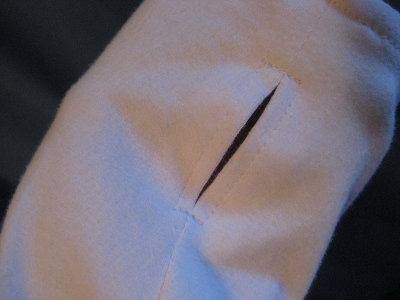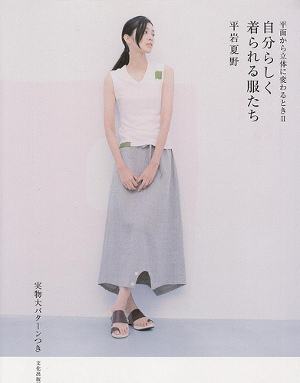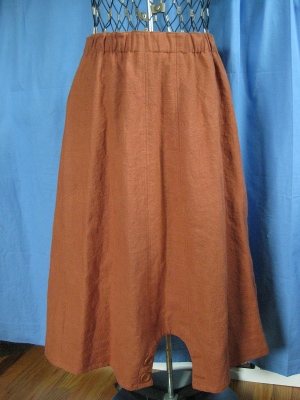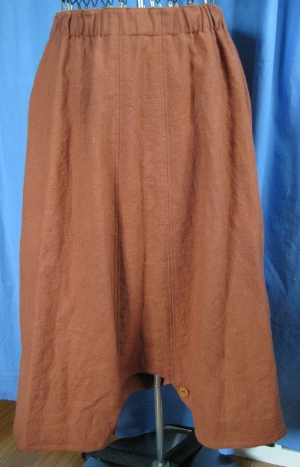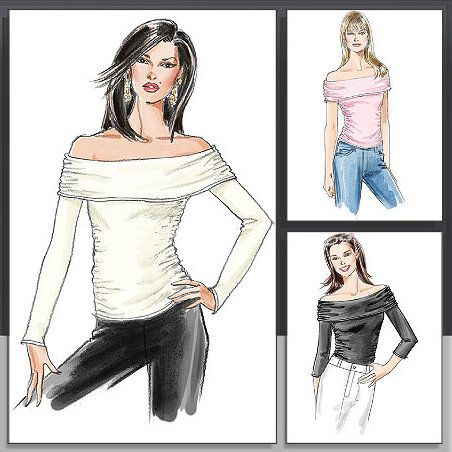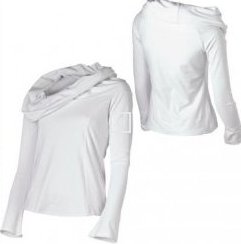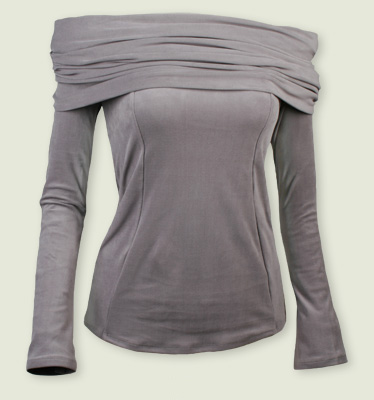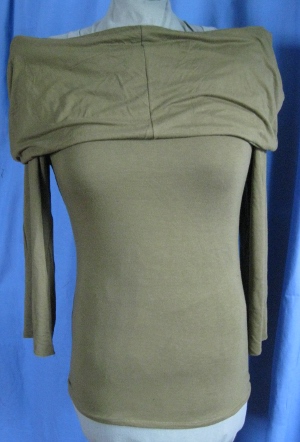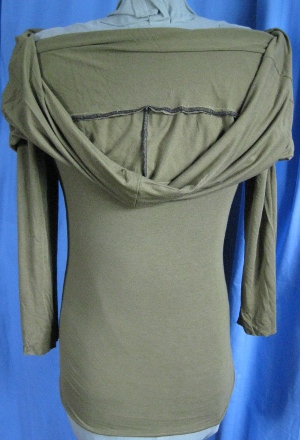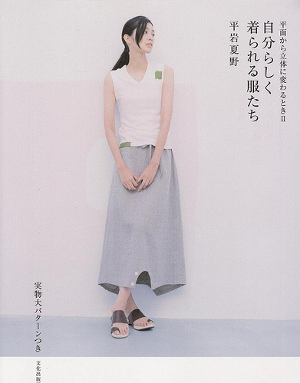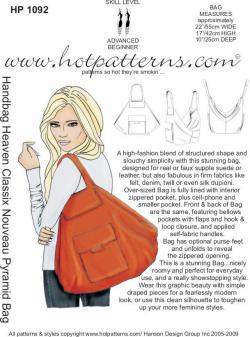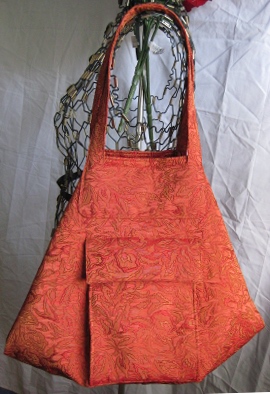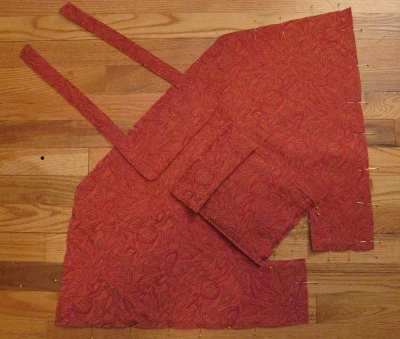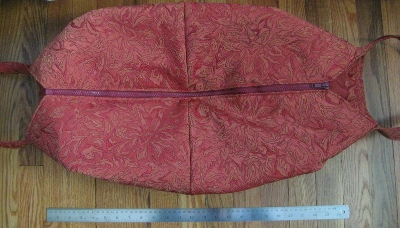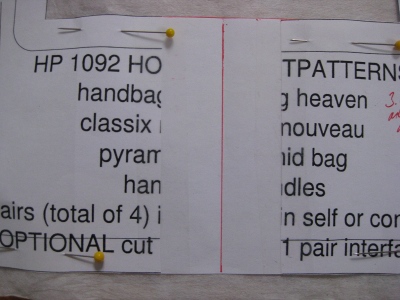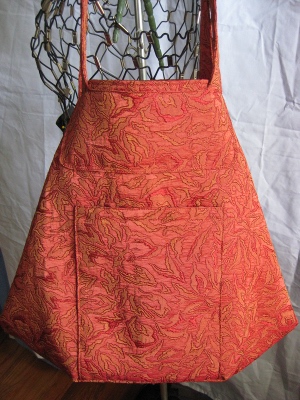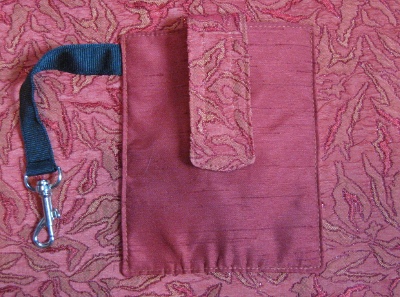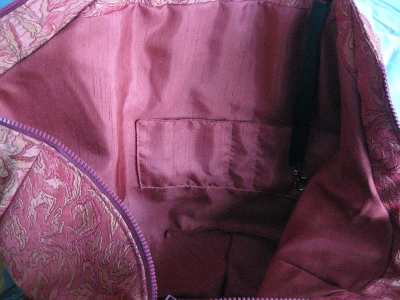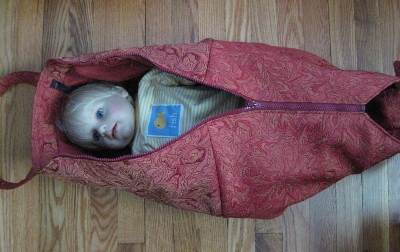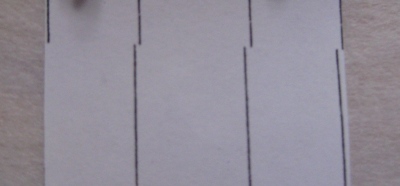Ever wonder what a PR Weekend is like? Here’s a whirlwind recap of the last few days in Philadelphia:
First, the incomparable Kenneth King put on a wildly entertaining show, hauling out a number of amazing garments from his bright red suitcase and describing how he went about designing them. He was wearing an ornately embellished blazer he got at a thrift shop or consignment store, to which he added incredible frogs to replace the buttons and buttonholes:

He was very, very funny, extremely personable, and completely accessible. His presentation was an off-the-wall, rip-roaring way to start a fun weekend. There wasn’t much ice left unmelted by the time he was packing up.
He started off by telling anyone who hated fur to just shut up. So we did. Kenneth King is a force of nature; you don’t argue with that. Ignoring the fur part (see? I’m still not talking fur), the lining on this bolero was incredible.
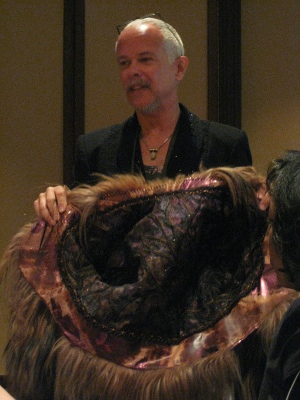
He started with a photo of trees (with snow on the branches?), used the photo to turn the limbs to shadows, then pin-pricked the pattern, dusted through the holes to reproduce the pattern on the lining, and so on. I hope I’m describing this particular garment — I may be conflating this with another. There was lots and lots of awesome “so on”. If Kenneth King is in town, get on the train!
The topic of the day was embellishment, and we’d all come with kits of goodies so that we could play and experiement. Kenneth showed us a bunch of useful techniques, and brought along samples, too:
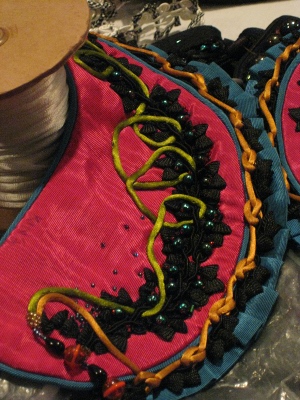
Interestingly, he did not bring any books for sale, owing, he said, to an agreement with his publisher. He had quite a few tales to tell of working with his publisher, so any would-be authors also walked away with a bunch of information that was likely to come in handy.
I kept trying to get just the right shot of his gadget kit, but, hey, it’s a real tool box, and he was using it, so this was all I ended up with:
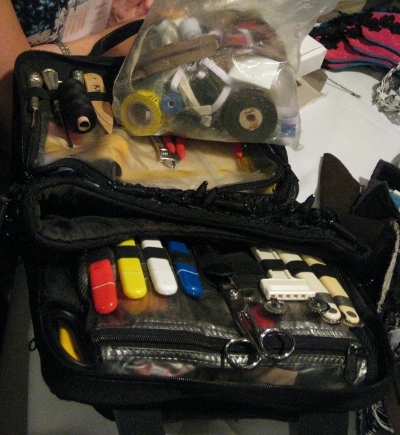
I’m pretty sure that’s an industrial-strength cosmetics kit. Clever, and perfect for the job!
Then we were on our own for lunch in the area; my two companions were almost too-patient with my peculiar food needs, even though I tried to liberate them several times, but in the end we were rewarded when we found Asian Bistro, and bento lunches at a very reasonable price, including, in my case, miso soup:
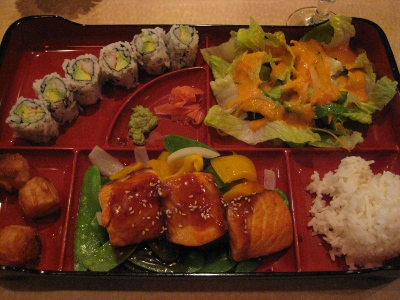
Yeah, I know. No fur, but I eat fish. Neurological issues; it doesn’t seem safe not to. (I’d like to note that it’s not easy escaping meat in Philadelphia, whether or not you consider that Cheesesteak sandwiches contain actual “meat”.)
Afterwards we caught the Phlash loop to the Philadelphia Museum of Art for a behind the scenes look at the textile collection.
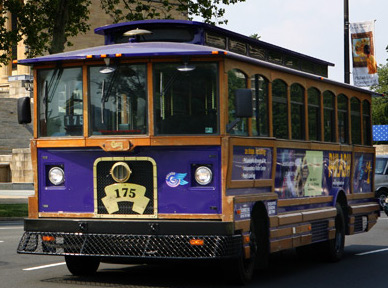
Oh. My. We gasped and ooohed our way through a half-dozen garments. This bodice is from one of the gowns; the flowers are paper, and the fringe is thread. Carolyn was standing next to me, plotting how she was going to duplicate this amazing finery at home, so I’m counting on her to come up with her version ASAP.
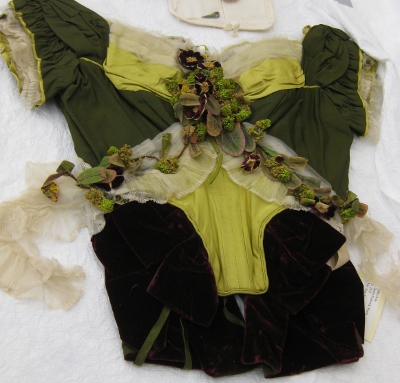
The curator was very accommodating, turning edges and folding each garment so that we could get a really good look at the details.
I’m a local, so I went home at this point (I was up at 5 AM catching the train after only four hours sleep), but dinner at a pizza place near the hotel was included in the weekend fee. Not pizza, it turned out, but a full-fledged Italian dinner, with cannoli for dessert (be still, my heart!).
The next morning it was into the big yellow school bus (really!) for a trip to Philadelphia’s Fabric Row. Lee had her hands full with 39 of us on the bus; she resorted to counting us, largely, I think, because the din was overwhelming, and there was no other way to make sure all the chickens were in the coup.
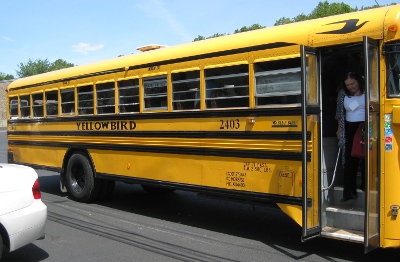
The driver looked as if he were flying gang colors what with the headgear and the pants, but he couldn’t have been nicer, and, although he got lost twice in New Jersey, he got us back on track quickly.
Philadelphia’s Fabric Row is a little thin if you’re used to NYC, but somehow it looked as if most of us found at least something to buy. Lines were long at PA Fabric Outlet, where prices were seriously low, especially for lace, trims, buttons, and one of my favorite vices, tapestry-like wide trims. This was probably the busiest Saturday in memory for them, but everybody managed just fine.
Lunch was on our own on Saturday, too; I ate early (breakfast had been at 5 AM) at Moaz Falafel, but I won’t do that again. As I was munching at the front counter, a guy in a filthy white van pulled up and honked. A Moaz employee came out of the restaurant, threw open the sliding door and dragged a huge plastic container — just like the ones I use for clothes storage — across the (dirty, dirty) empty van floor. Then he replaced the lid, which had apparently popped off while the van was in transit.
The container, obviously not food-grade or anything close to it, was full of the cilantro sauce I had just put on my falafel. Swipes someone had obviously made with a cloth or sponge were clearly visible inside the top half of the container. My falafel was a little gritty; now I didn’t want to think about why. The employee shot me a very worried look (I was alone at the counter), as well he should have. Gag. No more Moaz for me.
Nonetheless, I lived to shop again. Shudder.
We met back at the bus and headed for London Textiles across the bridge in New Jersey, which is where things got crazy. London is a wholesale operation, so it’s like a large warehouse. We were handed a price list, based on type of fabric, but what really got us mobilized were the last two lines: wool or silk remnants $5/yard, all other remnants $3/yard, must take whole piece. Remnants? Must take whole piece? Honey, take this box of Godiva, and you have to keep it ALL!
It looked as if the locusts had descended. There were a half-dozen or so deep bins full of fabric, mostly from one to six yard pieces (that is to say, from $3 to $25 for the piece), everyone of them with a crowd of women ducking in and out, fishing for gold. Some people were surprised to realize that the cost was per yard, not per piece, but this didn’t seem to discourage anyone, and I’d be surprised if anyone left without at least one remnant. Volume in the bins was noticeably down by the time we left, but there were beautiful silks, linens and cottons from rolls flying out the door too.
No pictures. That would have required focus that I just couldn’t muster. Also, I was climbing into the remnant bins along with everyone else. I was busy.
Thence to Jomar, kind of a Philadelphia sewing institution, and one upon which many of us are heavily dependent.

On the website, it’s the Swanson store, but it’s on Jackson Street, a few blocks behind IKEA, over by the water. Jomar stores sell huge quantities of junk liquidated goods, but each store also has a huge (and widely varying) selection of cheap, cheap, cheap yard goods. You name it, Jomar has it: everything from the most coarse burlap to filmy designer silks to home dec. Mimi, a PR volunteer, told me that Jomar started out selling returns from places like Garfinckel’s, the venerable Washington department store. That merchandise would be several hundred grades above what’s currently sold on the first floors, but there are amazing finds to be had upstairs at any Jomar if sewing is what you have in mind.
Jomar is notorious for very slow service at the cutting tables (if you go, consider a weekday during business hours for best service), but they had been warned by the PR team, and they really rose to the occasion. The staff was whipping through the cuts as if they were slicing butter. Because we’d run a little late at London Textiles, we’d all chipped in a dollar to hold the bus for an extra hour, but if people were held up, it was because they couldn’t stop shopping, not because Jomar wasn’t on the ball.
Several of us had trains to catch, and couldn’t stay later, so our PR coordinators arranged with Connie and Andrea for transportation back to the hotel or to the train. It was great that everyone was so accommodating, and I was really pleased that I hadn’t had to skip the afternoon in order to get home when I needed to. Sheila, Elizabeth and I had just enough time for a quick bit at Cosi at the 30th Street station before our trains. (There was one last joke on the quasi-vegetarian — the Cosi guys accidentally served me a roast beef sandwich instead of my roasted veggie. Just after I had determined that the portobello I was looking at had a strange texture, they came chortling up to make the switch. I hadn’t taken a bite, and the veggie sandwich — way under 400 calories, was satisfying and delicious. (Salad, by the way, involved 1.5 times the calories. Gotta love labels.)
What was the best part of a completely great weekend? Seeing so many women wearing clothes they’d made themselves. An amazing number of attendees wore their own creations, many of which I recognized from blogs. It was so cool to see them in person! Auntie Allyn’s dress looked great in her PR review, but was even more smashing on her. (Vogue 8659, here I come, and may you look 1/6 as good on me as you do on Allyn!), Connie’s Vogue 1090 suits her to a tee, and I loved seeing Lee’s just-finished turquoise tunic.
Paula McP’s “happy pants”/linen top were so much fun, and her Asian jacket was gorgeous. (She doesn’t have a sewing blog, so I lobbied for one. She’s hiding treasures from us!) There were so many wonderful garments, all of them great reflections of the women who made them, and a treat for the eyes — not to mention inspiration for the fingers.
The garment that took my breath away in its perfect simplicity, in part because it suited the wearer so perfectly? Claudine’s linen dress with chevrons:
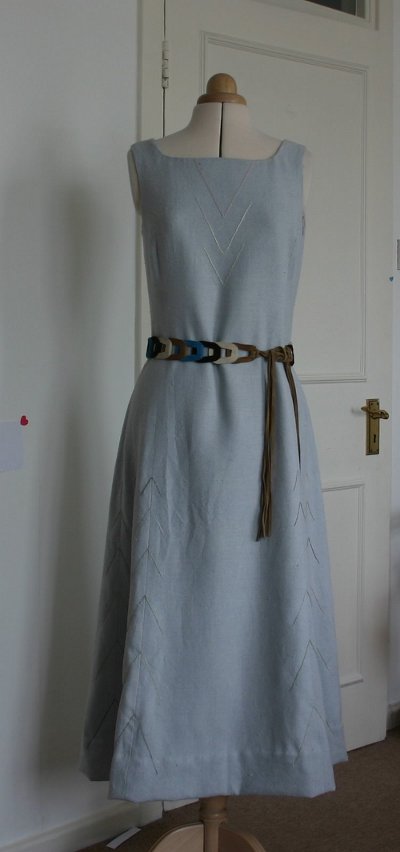
This picture doesn’t do it justice; you have to see it on Claudine to realize how perfectly it suits her. (In fact, Claudine’s blog pictures don’t do her justice: She’s always so serious. In person she has a lovely smile, and is the soul of grace.)
Claudine embroiders. Really, really well. What you can’t see clearly on this dress (although there’s a close up on her blog, and a larger image available) are the beautifully worked and placed chevrons at the bodice and along the sides. Meticulous work, and so perfect for the dress as well as on Claudine.
PR coordinators and volunteers Karen, Andrea, Lee, Kisha, Mimi, Annette and Elaine did a great job coordinating this first Philadelphia weekend, and rolling with the few bumps. I especially appreciated the booklet we all received with bios, the itinerary, maps, and a list of the stores we visited (includinf contact information). My only suggestion? Make sure that everyone’s blog is included in her (and potentially his) bio, as well as their PR names. I want to keep tabs on what all these creative people are doing! (Prior to the weekend, I made up this list, but I’m sure I missed someone . . . )
Plash photo credit: visitphilly.com
I see my shorthand got away with me: This is a recap of a weekend in Philadelphia organized through Pattern Review, popularly known as “PR”.

